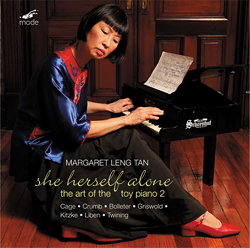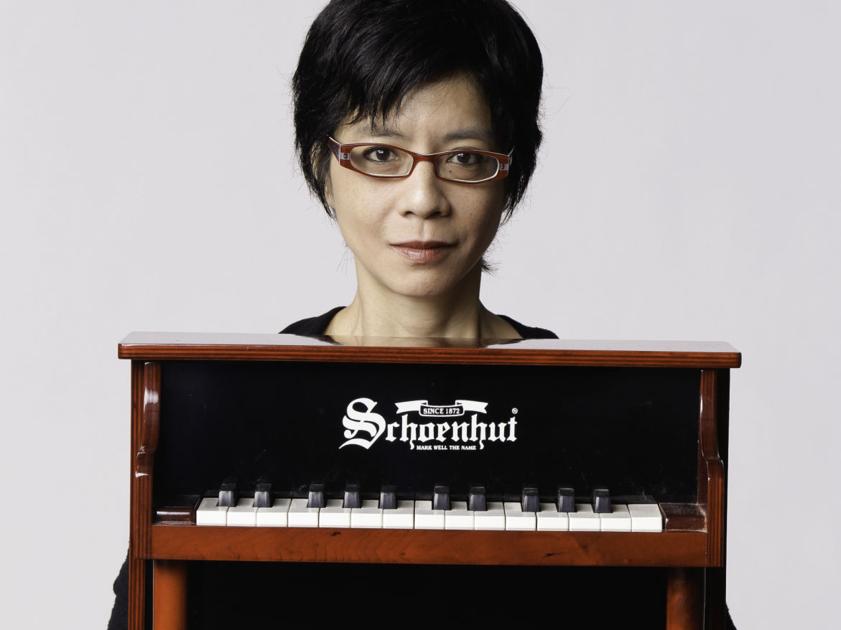The list below includes all pages in the category 'Scores featuring the toy piano'. These include both original works and arrangements where the toy piano is either a solo instrument or plays as part of a small instrumental ensemble. → See also: Scores featuring keyboard soloists — Scores featuring the piano — Scores featuring toy.
Aside from his Music for Wind Instruments written a decade earlier, John Cage (1912-1992) was known in 1948 for his works for percussion, for piano, and for prepared piano, mostly written for dance companies. The prepared piano gained him wide notoriety as he attached washers, nuts, bolts, strips of paper, and rubber muting objects to the piano strings; each score contains drawings and precise instructions showing where to put these implements.
Suite for Toy Piano (1948) in a version for piano, occupies tracks 3 – 7. Merce Cunningham ’s choreography for this Suite for Toy Piano is entitled A Diversion. Cage never performed it on a toy piano, but one recording that I know well is Joshua Pierce ’s interpretation on a Wergo CD. This page lists all recordings of Suite for Toy Piano by John Cage (1912-92). Showing 1 - 10 of 11 results. Add download to basket. View full details.

The purpose of all this fooling around with the innards of the piano was to change the piano, in effect, into a 'percussion ensemble in a box' that could be played by a single player. The sounds Cage obtained tended to be unemotional and hard-edged, and he deliberately restricted his available palette to a few notes.

Download Suite For Toy Piano John Cage Full
Cage enjoyed the chiming sound of the toy piano and clearly was predisposed to write for a keyboard that produced, again, hard-edged and unemotional sounds from a limited-note palette. Another factor that obviously predisposed him to write this suite was his major occupation of that year: he had gone to teach at Black Mountain College in North Carolina. (While teaching there in 1944 he had organized an event that is generally acknowledged as the first instance of what two decades later came to be called 'a happening.') His 1948 project was a 25-concert series featuring the music of French composer Erik Satie.

The simplicity of Satie's music is evident in this suite. The work is in five brief movements, none more than two minutes in length. Cage announces the musical material of the first piece in the form of an incomplete scale. The toy piano is a very limited instrument; it has not much more than an octave of diatonic notes. Cage starts by restricting this instrument even more, using only five notes in the middle of the instrument. The next three notes expand the note palette until all keys on the toy instrument can be used, and then the final movement reverts back to five notes. The music has an intimate and charming, if somewhat deliberately bland quality.
In 1963, Cage's friend Lou Harrison made an orchestral arrangement of the Suite for Toy Piano. This version uses a large orchestra. With the full resources of the orchestra, Harrison adds remarkable amounts of character to the work. He does not harmonize or add additional notes, but he does double the notes at the octave. The sound of the orchestration is at times stately, at times exotic (sometimes even far-Eastern). Harrison's orchestration is far in result from the intentions or sound of Cage's original, but it is beguiling to the ear. And Cage, who loved the idea that his music was unpredictable, did not complain when Harrison created a sound for this music that the composer never dreamt of.

Parts/Movements
- Movement 1
- Movement 2
- Movement 3
- Movement 4
- Movement 5

Appears On
Download Suite For Toy Piano John Cage Free
| Year | Title / Performer | Label / Catalog # | AllMusic Rating |
|---|---|---|---|
| 2013 | 8559726 | ||
| 2012 | |||
| 2012 | |||
| 2012 | AAP 12001 | ||
| 2012 | MDG 61317312 | ||
| 2010 | Mode Records | ||
| 2008 | EMI Classics | ||
| 2007 | New World Records | ||
| 2005 | 147 | ||
| 2002 | MDG 61307982 | ||
| 2002 | MDG 61307942 | ||
| 2000 | 4651402 | ||
| 2000 | American Composers Orchestra / Dennis Russell Davies / Margaret Leng Tan | 465140 | |
| 1994 | 09026 61980-2 | ||
| 1993 | 6158 | ||
Various Artists | NA 070 | ||
104 |